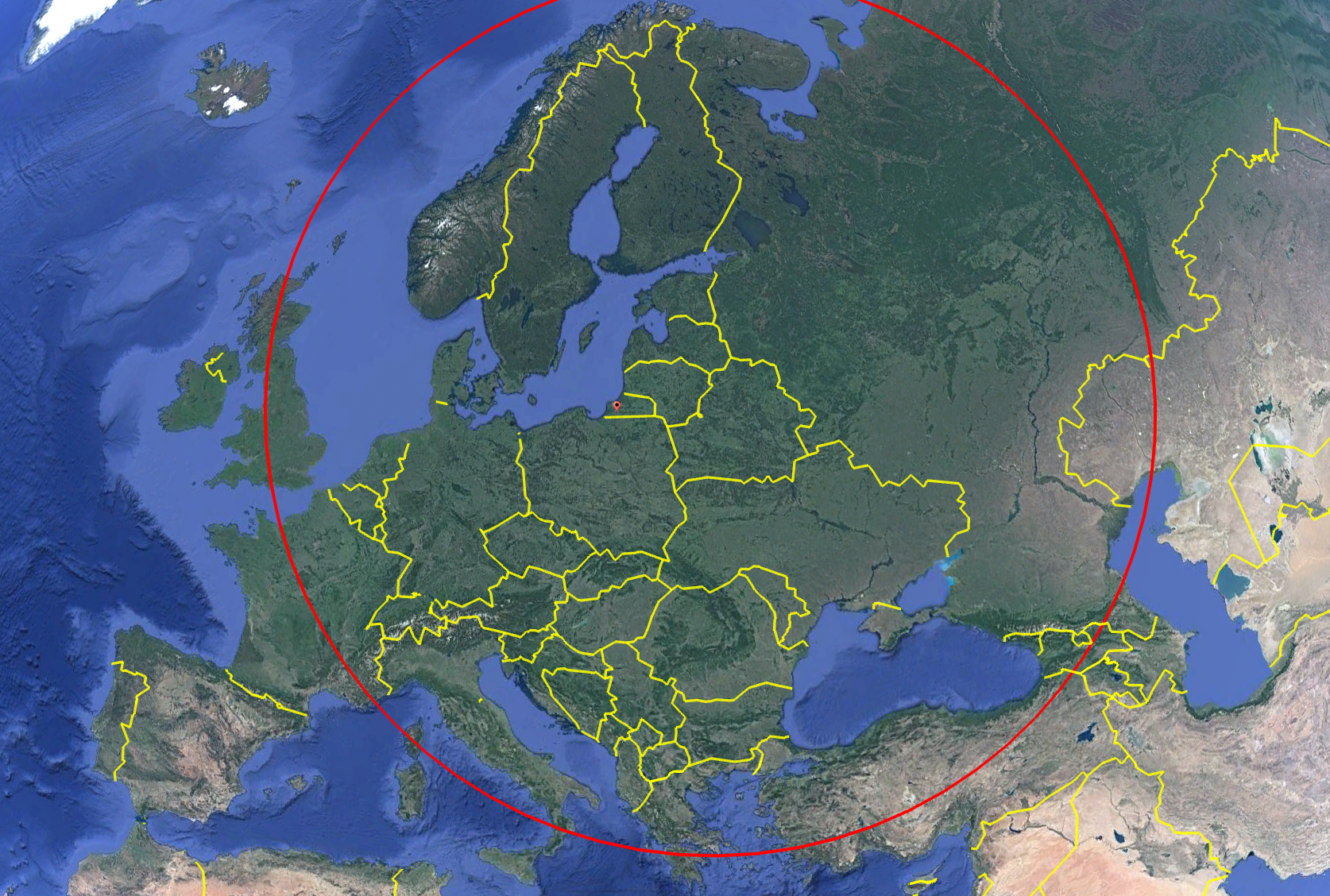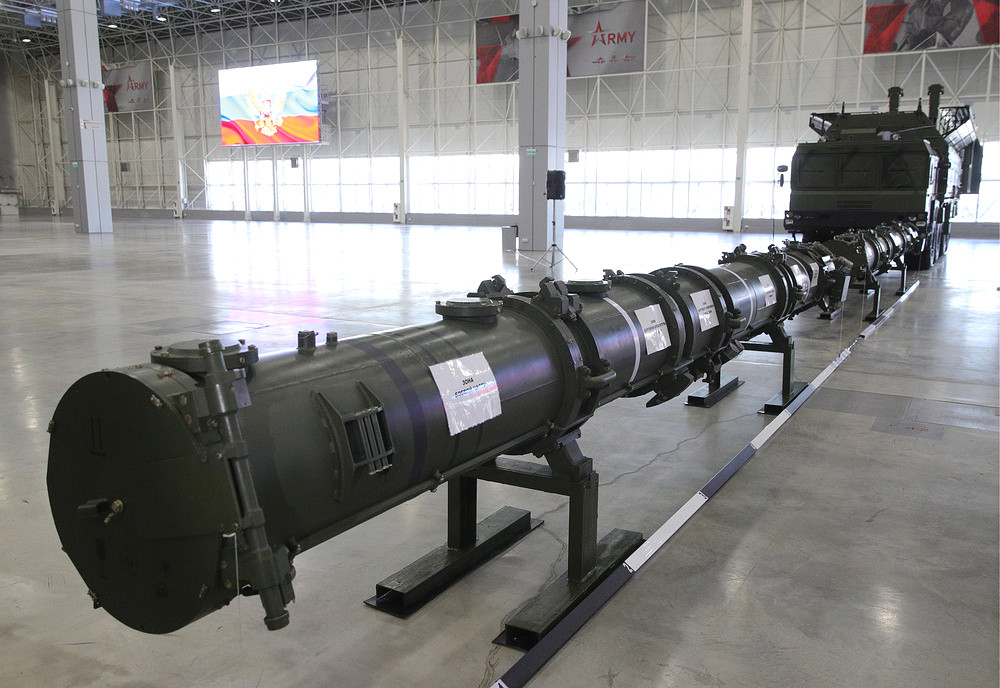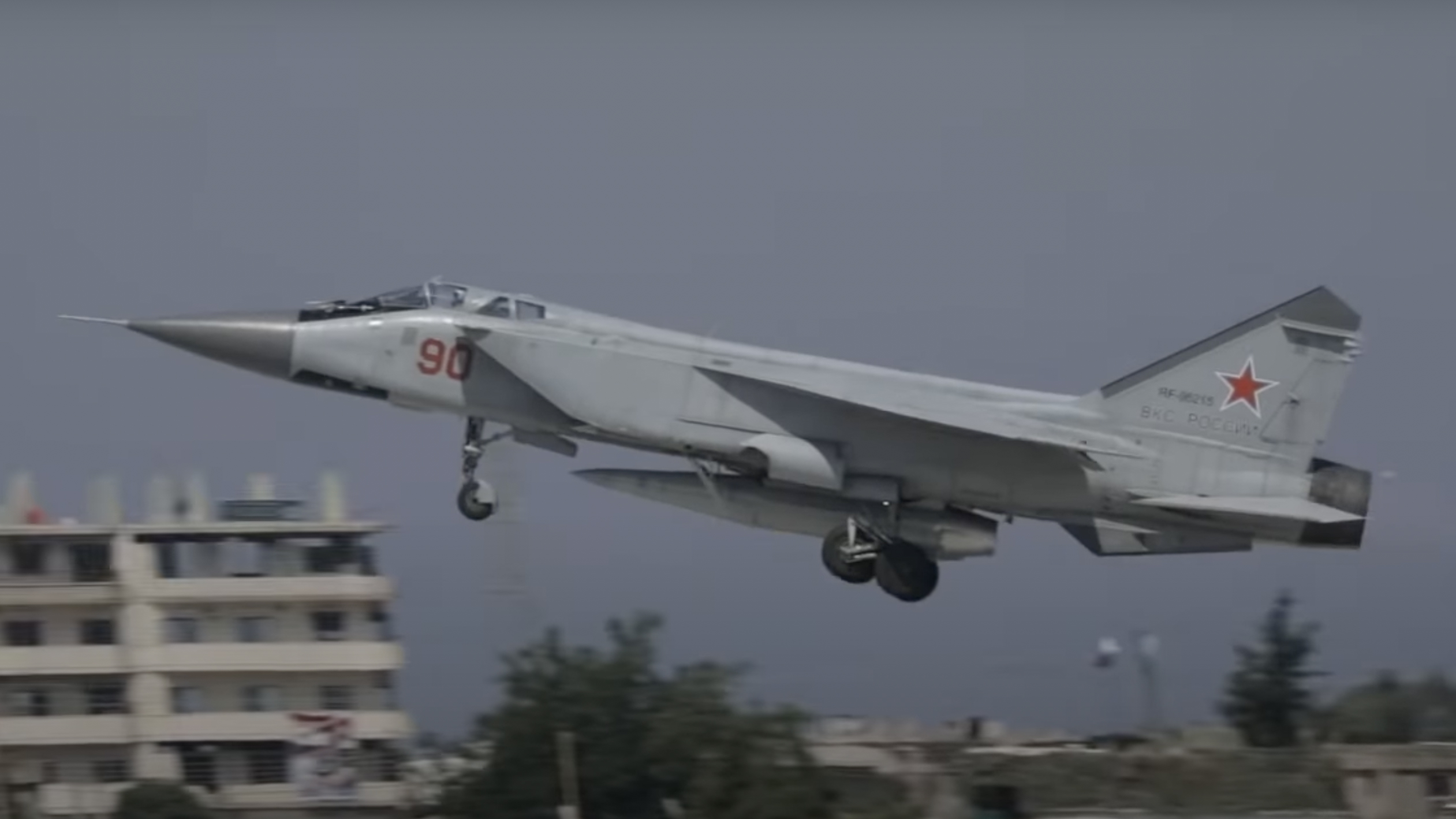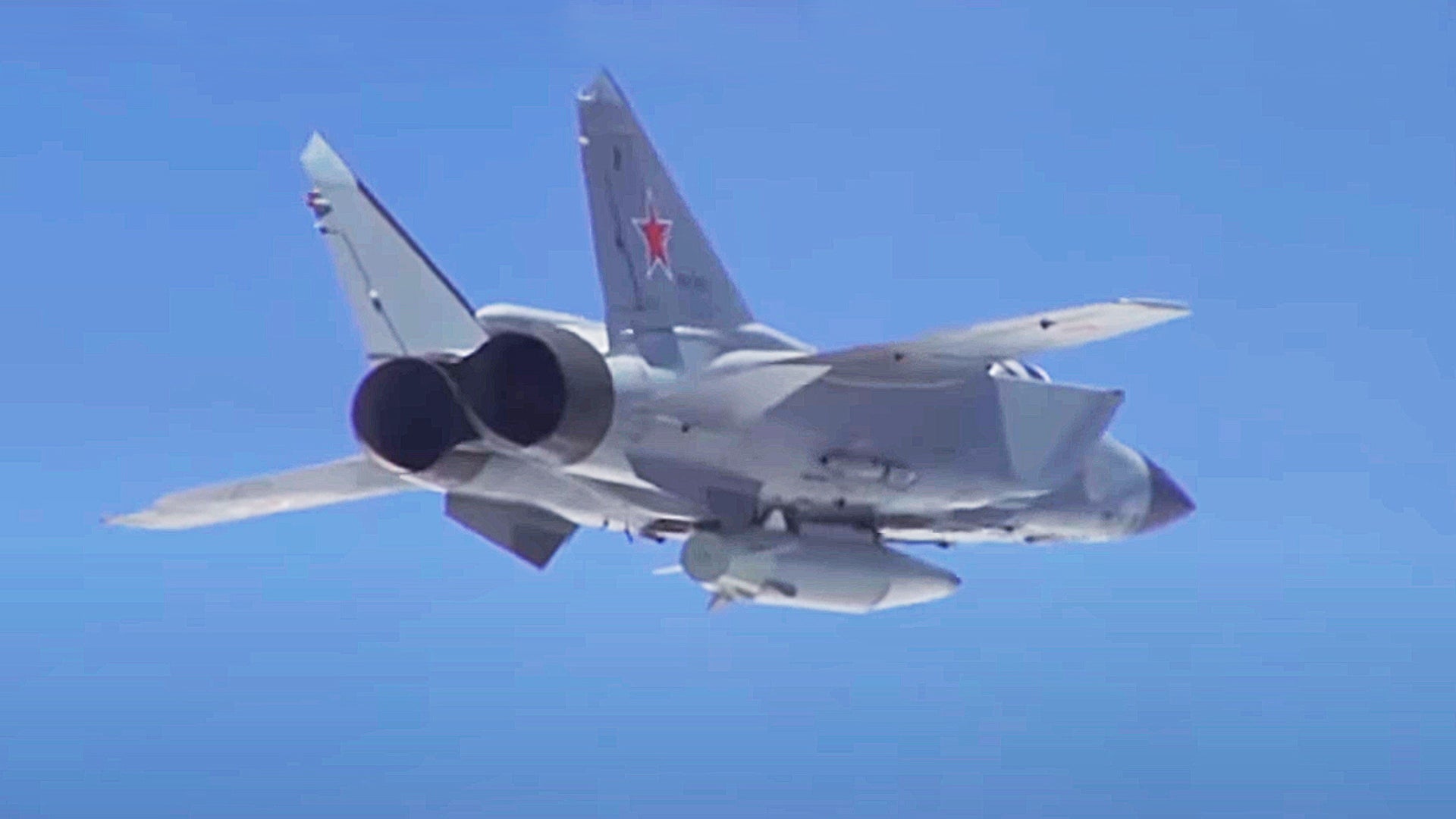Russian Aerospace Forces MiG-31 Foxhound interceptors armed with Kinzhal hypersonic missiles have touched down in the Russian exclave of Kaliningrad, apparently for the first time.
Deploying the air-launched ballistic missiles to the exclave, which borders NATO members Poland and Lithuania, provides a powerful new capability to rapidly target objectives in the region, potentially using nuclear warheads. Moreover, the deployment sends a clear signal to NATO, which has been building up its own military assets in Eastern Europe and the Mediterranean amid fears that Moscow will make a new move against Ukraine, which many think could happen imminently. As well as a possible tit-for-tat reaction to NATO troop movements, the deployment ties in with recent rhetoric from Russian officials about placing unspecified missiles along Russian borders.
A video posted earlier today shows a MiG-31 armed with a Kinzhal (Russian for dagger) missile on its centerline, on approach to an airbase in Kaliningrad. Unconfirmed reports suggest the video was made yesterday, February 7, and geolocation using open-source data identifies the location as Chkalovsk Air Base, which normally is home to Russian Navy Su-27 Flanker jets as part of the Baltic Sea Fleet. Exactly when the deployment began is unclear, but unconfirmed reports suggest that four Kinzhal-capable MiG-31I — or MiG-31I(K) — variants are now in the exclave, which has a particular significance for Moscow, bordering as it does NATO countries and located strategically in the Baltic region.

According to Carl Bildt, Co-Chair European Council on Foreign Relations (ECFR), a German think tank, half of the operational Kinzhal missiles available to Russia are now in Kaliningrad. Unconfirmed reports suggest that 10 or 11 MiG-31s have so far been converted to carry and launch Kinzhal on an operational with two more used for test work, suggesting that there could be five of the aircraft in Kaliningrad. Kinzhal-equipped MiG-31s are normally based at Akhtubinsk, near Astrakhan, in southern Russia, close to the border with Kazakhstan.
It’s unclear if the deployment took place before or after Russia’s President Vladimir Putin made assurances to his French counterpart, Emmanuel Macron, that Moscow would not undertake any new “military initiatives” in the region. Putin apparently also said that Russian troops currently deployed on supposed exercises in Belarus would be withdrawn from the country once those drills are completed. It remains to be seen what such a withdrawal might actually look like and whether all Russian forces and all of their equipment will actually return to Russia.
The Kinzhal, which was one of Putin’s cadre of six superweapons announced in 2018, is an adaptation of the Iskander (SS-26 Stone) tactical ballistic missile into an air-launched weapon and has apparently received the NATO codename Killjoy. According to Putin, the missile has a range of over 1,200 miles and flies “at a hypersonic speed, ten times faster than the speed of sound.”

In addition, the missile is capable of maneuvering, flying flat or porpoising trajectories, making it a challenge to intercept by missile defense systems. It may also have an anti-ship cruise capability, or it could be adapted for that role in the future, hitting moving vessels at sea. Its nuclear capability could allow it to attack surface fleets without extreme precision, as well. But it’s primarily designed to be used against important ground targets, including hardened bunkers, with delivery by a high-flying supersonic interceptor. This greatly extends its reach, deployability, and flexibility over the surface-launched Iskander.
Examples of the Iskander have also been moved closer to Ukraine in recent weeks, the Ukrainian Ministry of Defense predicting that these weapons, reportedly 36 in all, would likely be used to “destroy vital objects,” should Moscow launch a new offensive against Ukraine.
Footage of Iskander short-range ballistic missile systems underway near the Ukrainian border as well as missile reloads being transported in open-top railcars:
Soon after Putin revealed the existence of Kinzhal, the commander of the Russian Aerospace Forces, Sergei Surovikin described it to reporters as such:
“The Kinzhal system substantially boosts the capabilities of the Russian Aerospace Forces to respond to any possible act of aggression against our country and along with other strategic weapon systems will help deter possible adversaries from rushing headlong into action… The fast-speed fixed-wing carrier allows delivering a missile with unique performance characteristics to the area of its discharge within minutes. The main propulsion unit mounted on the aero-ballistic missile accelerates a warhead to hypersonic speed within seconds. The missile’s maneuvering at speeds exceeding the speed of sound by several times allows it to reliably breach all air defense and anti-ballistic missile defense systems that exist or are being developed.”
Having Kinzhal missiles forward-deployed in Kaliningrad at this time would seem to be of particular value in signaling to NATO that it would respond in kind should the alliance seek to counter a Russian move against Ukraine. As we have suggested in the past, any such large-scale action would likely involve a missile barrage launched from aircraft, warships, and also surface-launched Iskanders. Having air-launched Kinzhal missiles in Kaliningrad doesn’t make immediate sense in terms of attacking targets in Ukraine, since Russia would likely need to violate NATO airspace to get closer to Ukraine, but it adds another option should Russia want to target NATO objectives in the region.
With that in mind, the presence of the Kinzhal is less about knocking out high-value Ukrainian targets, and much more to do with its powerful deterrence value against NATO potentially becoming involved in the defense of Ukraine. Even when launched from above Kaliningrad, the Kinzhal has the range to hit the capital cities of most NATO members in Europe, as well as key military infrastructure across the continent.

U.S. intelligence estimates that around 100,000 Russian troops are currently deployed around Ukraine’s borders. The number of battalion tactical groups, or BTGs, has apparently increased in recent weeks, from 60 to 83, with another 14 still in transit toward the region from elsewhere in Russia. U.S. officials also believe that between 1,200 and 2,100 Russian special operations troops are deployed in the region; these could potentially be used as advance raiding parties, undertaking reconnaissance and activities behind enemy lines. However, Western officials still believe that only around 70 percent of the total forces required for a full-scale invasion of Ukraine are currently in position.
Aside from scenarios involving NATO and Ukraine, there is also the possibility that the Kinzhal deployment is related to an expected upcoming series of maneuvers designed to test the readiness of Russia’s nuclear forces. U.S. military and intelligence officials believe that these maneuvers could be planned for this month, in part as another warning to NATO not to intervene should Russia ultimately launch a new invasion of Ukraine.

Russia holds regular exercises for its nuclear forces and the potential for the Kinzhal to carry a nuclear warhead means that it’s likely now viewed as a strategic weapon in its own right, alongside the well-established surface-launched and submarine-launched intercontinental ballistic missiles and subsonic air-launched cruise missiles.
Kaliningrad, in particular, has become something of a missile bastion for Russia, in which the addition of Kinzhal would provide another vector to the already potent missile capabilities here, which include surface-launched Iskander ballistic missiles as well as the assumed deployment of the 9M729 ground-launched cruise missile (SSC-8 Screwdriver) that uses the same transporter-erector-launcher (TEL) vehicle as the Iskander. This controversial weapon violates the terms of an important arms control agreement, according to U.S. officials.

There is also the possibility that the presence of Kinzhal is intended as a signal to NATO maritime activities in the Baltic region, where the Russian Navy has been notably active in recent weeks. In the past, Russia also deployed Kinzhal to Syria, apparently at least partly in response to NATO naval operations in the eastern Mediterranean, including by the U.K.’s Carrier Strike Group 21 based around the carrier HMS Queen Elizabeth.

Another factor here is Russia’s continued concerns about the fielding of NATO missiles on or close to the alliance’s eastern flanks, and primarily the Aegis Ashore sites that provide an anti-ballistic missile capability. Aegis Ashore is already operational in Romania and a site in Poland is expected to be operational by the end of this year. Placing air-launched ballistic missiles close to NATO’s own borders may well also be a response to this as well as U.S. plans to deploy new ground-based hypersonic weapons and other longer-range missiles in Europe in the coming years.
Time will tell whether the deployment of Kinzhal to Kaliningrad is directly linked to warning off NATO in the case of Russian operations directed against Ukraine or if it will become a longer-term presence in the Baltic. Either way, the appearance of this missile in the exclave is a powerful signal of the expanded Russian military presence in the wider region.
Contact the author: thomas@thedrive.com
